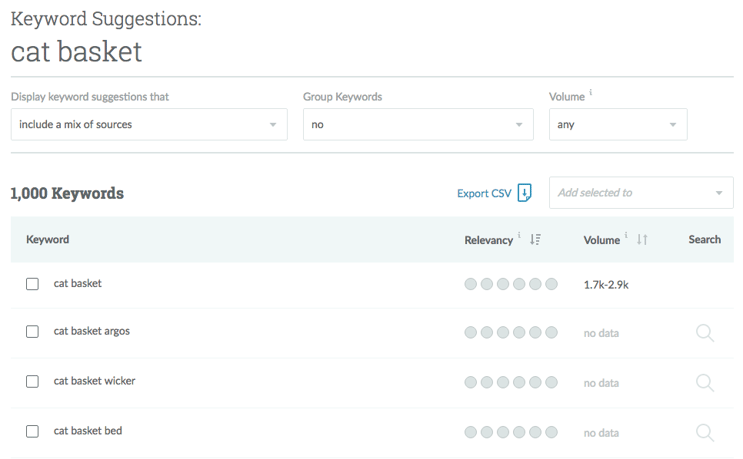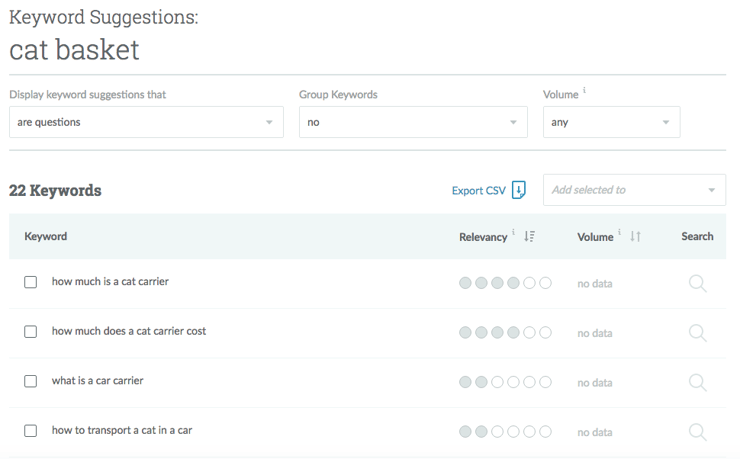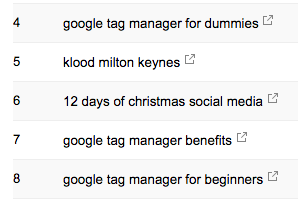
Get weekly
HubSpot updates
When you’re planning your content, you’ll want to try and find the keywords that best serve customer intent. One of the best ways to do this is to look into long-tail search phrases.
Long-tail search phrases are search queries made up of a larger number of words than a keyword (four or more). As an example, a keyword might be ‘table tennis bat’, and a longer tail search query might be along the lines of ‘which table tennis bat is right for me?’ or ‘prices for beginners’ table tennis bats’.
As you can see, long-tail phrases tend to have much more in the way of intent, either to buy, compare, browse or learn. As such, these longer-tail keywords can be very lucrative if the correct terms for your business are found and targeted.
Researching these phrases can be a challenge, but there are steps you can take and tools you can use to identify potentially valuable long-tail keywords that will drive traffic to your website.
The first step is to take your list of existing keywords. If you don’t have one, you can build out this list by using the structure of your website, and key terms for your products and services to form a list of key topics you’d like to be found for in searches. We’ll call this list your ‘seed’ keywords.
The next step is to investigate each of these seed keywords more thoroughly. For the purposes of this blog we’ll be using Moz’s Keyword Explorer, but you can apply a similar method with other free tools, such as Wordstream’s Keyword Tool.
Let’s take a seed keyword, for example a product we might be selling. As an example, we’ll use a keyword of ‘cat basket’. First, search for the keyword, and then navigate to the ‘Keyword Suggestions’ section. This will give you a list of keywords, as below.
However, these keywords can still be expanded further.
Keyword Explorer has a function that allows you to see questions that have been asked that include this keyword. This is an ideal source of long-tail keywords that are also questions that have been asked by searchers, making them perfect candidates for blogs that answer these questions.
If the search is popular enough, you may even be able to snag yourself an instant answer in the search results by giving a good answer to these questions.
Another method of finding long-tail keywords is to use the automatic suggestions Google provide in the search results. These can be found at the bottom of the page and contain a few suggestions of terms that might be relevant to your search.
These suggestions can be used to further refine your keywords. For example, if we take ‘luxury cat bed’ from the above suggestions, and check the related searches for that, we can see more refined long-tail keywords.
This allows you to find related keywords and then consider which of these long-tail searches might be most relevant to your business goals.
You can also use the search terms that users themselves are using to get to your site. To do this, you’ll need to have Google Search Console set-up. Once there, navigate to the Search Analytics report in the ‘Search Traffic’ section of Search Console, which will show these terms. 
Look for search terms that you feel your content doesn’t focus on, and consider adding these key terms to that content, or creating new content to suit these searches.
By locating these long-tail keywords you can better plan out your content and website to target them — and take this valuable search estate for your own site.
